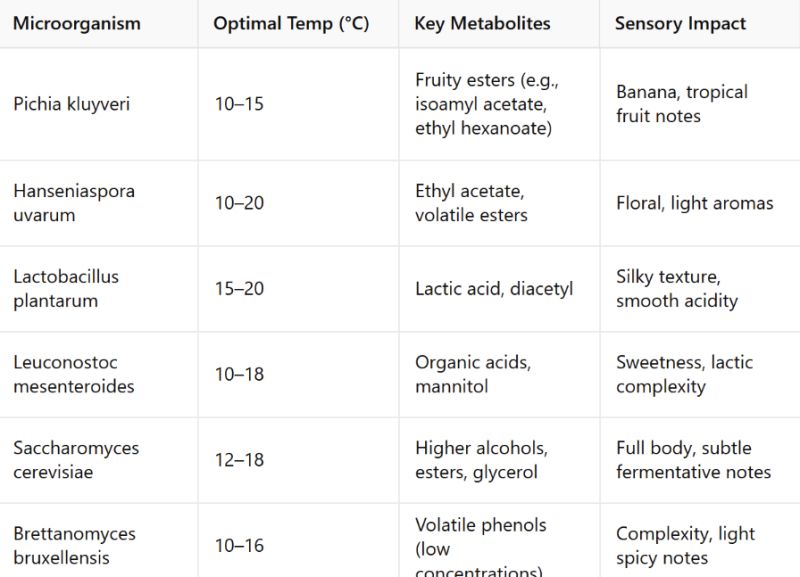
ICE FERMENTATION IN COFFEE – SELECTING MICROBIOTA THROUGH TEMPERATURE MANAGEMENT
In specialty coffee processing, microbial fermentation is a cornerstone of flavour development. While most post-harvest fermentations occur at ambient or slightly elevated temperatures, a novel approach is emerging: ice fermentation, or controlled low-temperature fermentation (typically 0–15 °C).
What makes cold fermentation scientifically interesting?
At reduced temperatures, the microbial succession shifts significantly. The metabolic rates of many spoilage and off-flavour-producing microorganisms (such as certain Enterobacteriaceae or heat-tolerant Bacillus species) are suppressed. Conversely, psychrotolerant yeasts and lactic acid bacteria (LAB) are either favoured or allowed to dominate due to their adaptive enzymatic systems.
This selective pressure leads to a more controlled fermentation environment, encouraging the Biochemical Dynamics at Low Temperature
– Lower enzymatic turnover leads to slower sugar and acid conversion, resulting in longer fermentation times but finer metabolic control.
– LAB such as L. plantarum and Leuconostoc spp. maintain activity, often contributing to the biosynthesis of exopolysaccharides, which improve mouthfeel and modulate astringency.
– Yeasts like Pichia and Hanseniaspora express cold-active esterases and decarboxylases that lead to higher ester production, especially acetate esters responsible for fruity/floral aromas.
– Saccharomyces cerevisiae, depending on the strain, can tolerate and thrive in low temperatures, producing glycerol and higher alcohols, improving viscosity and aromatic complexity.
Practical Benefits for Producers
– Enhanced control of fermentation trajectory
– Reduction of undesirable microbial blooms
– Distinct and repeatable flavour signatures
– Synergy with cold, high-altitude terroirs
– Potential to valorize high-density microlots through extended, clean fermentation kinetics
Ongoing Research Questions
What enzymatic pathways dominate at near-freezing temperatures in coffee mucilage substrates?
Can mixed or sequential inoculation be optimized under low-temp regimes?
What is the role of microbial cold shock proteins in mucilage hydrolysis?
How do cold fermentations modulate the Maillard and Strecker precursors during roasting?
AGAIN, here, the key information for these PHP is TRANSPARENCY !!!
hashtagCoffeeFermentation hashtagColdFermentation hashtagPostHarvestInnovation hashtagMicrobialEcology hashtagFlavourDevelopment hashtagCoffeeScience hashtagSpecialtyCoffeeResearch hashtagYeast hashtagLacticAcidBacteria hashtagIceFermentation